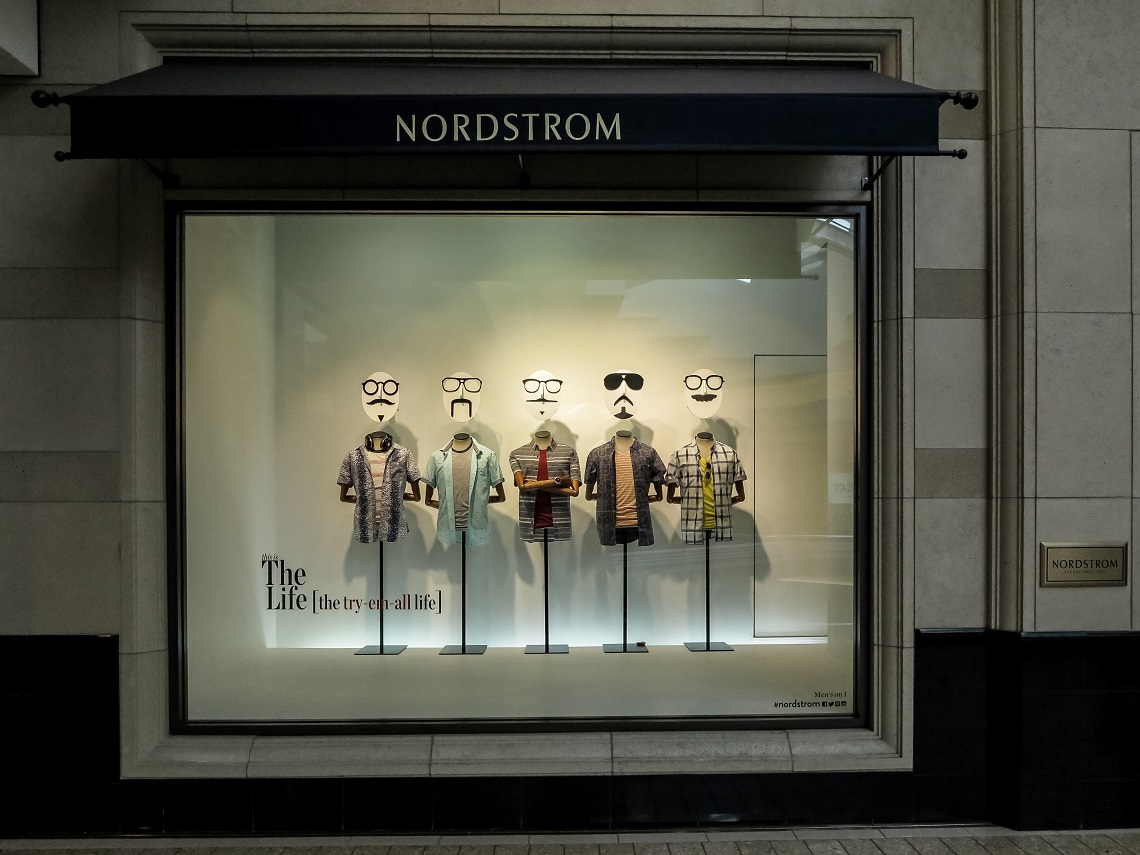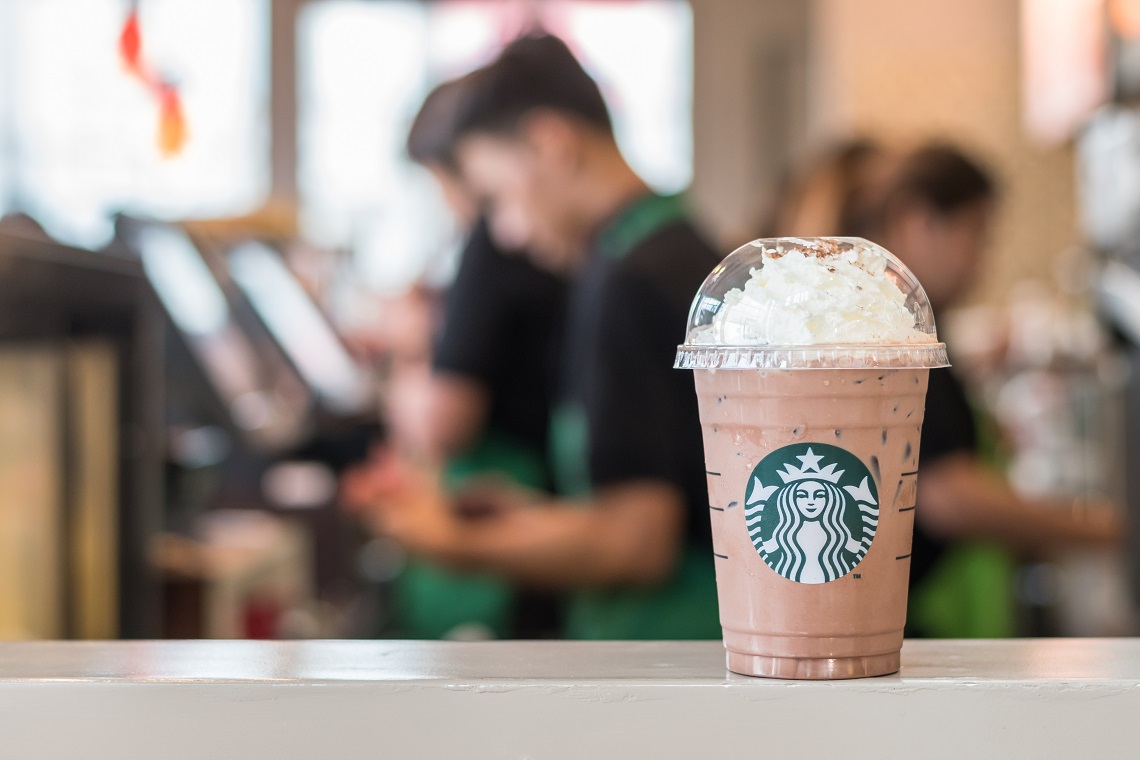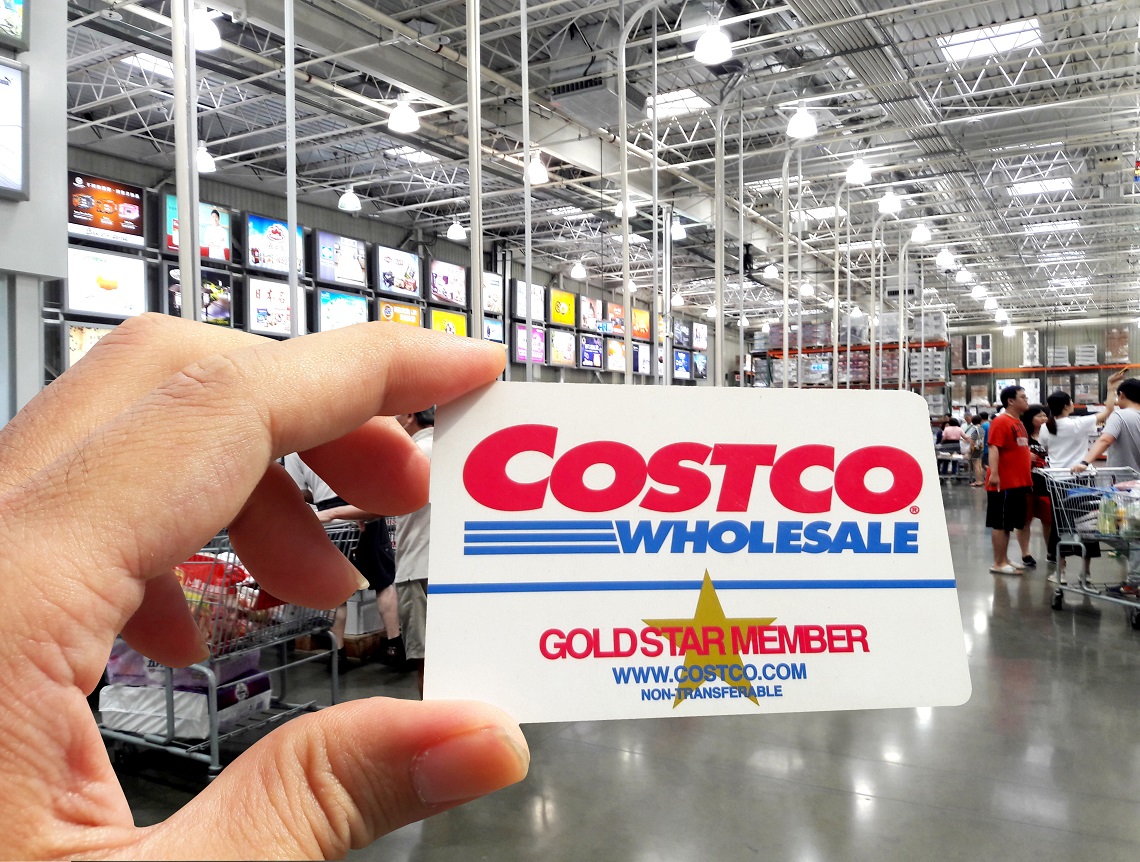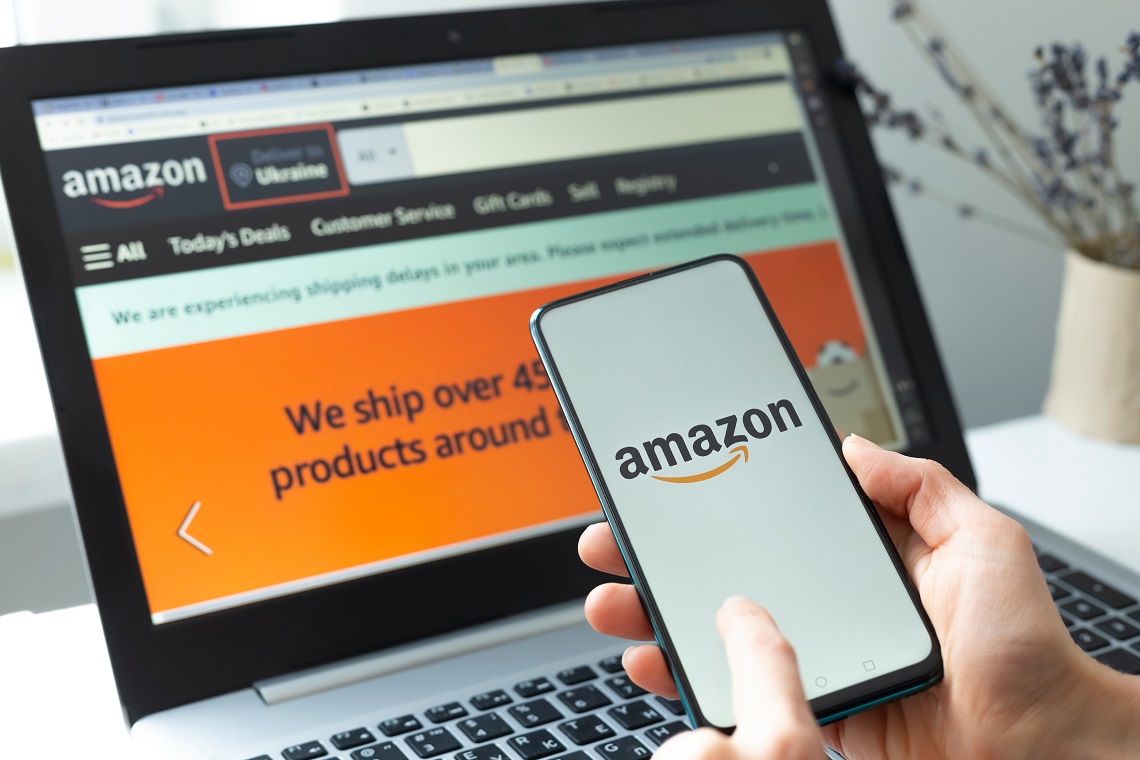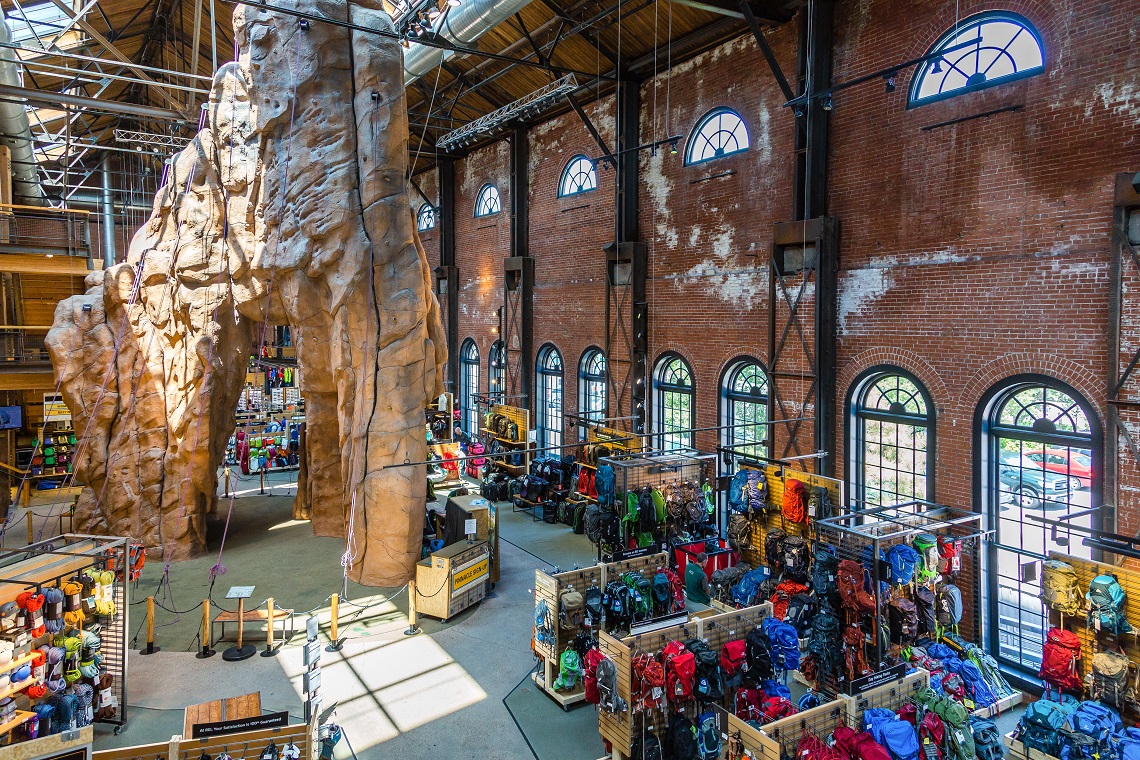The Seattle School of Retail
Seattle has produced some of the world’s finest retailers, and the UW Business School is making the most of this local abundance
Kjelsey Fortun waited, not at all patiently, for Starbucks CEO Jim Donald to finish his opening remarks to her honors leadership class. Once the floor was opened to questions, the UW Business School senior could barely contain herself. “I want you to know that my friends and I just returned from Spain,” she announced, her joyous tone assuring that this was no preamble to a protest speech. “We went all over Barcelona, Madrid and Sevilla to visit every Starbucks in the country. Okay, there were other reasons, too—but we must have hit all 10 stores!”
“Actually, we now have over 40 in Spain,” Donald said.
“Forty?” Fortun gasped. “We missed some!”
Starbucks tours of Europe. Obsessives who try to keep pace with the company’s rampant openings. Professions of addiction to the product and adulation of the brand. Donald hears this kind of gushing more often than you might expect.
So do his contemporaries who helm the other retail giants that call Seattle home and headquarters. In their own way, Starbucks, Nordstrom, Costco, REI and Amazon have each built a customer base that can behave, at times, more like a fan base.
They’ve done it by creating a unique, compelling shopping experience that they somehow maintain even as they have grown to national and international omnipresence.
Nordstrom has exported the personal touch of its original 1901 shoe store into a full-line, upscale department chain, with 156 locations across the country. REI has taken the grassroots notion of a consumer cooperative to its grandest scale, now outfitting 2.8 million nature-loving members at 82 stores. Costco has mastered the really-big-box warehouse club, counting nearly 500 stores and more than 46 million dues-paying members in eight countries. Starbucks has begot a global coffeehouse industry through more than 11,000 stores in 37 countries, some across the street from each other. And Amazon has emerged as the definitive mall of the Internet, selling $8.5 billion of anything and everything to 55 million customers in over 200 countries last year.
“We call them ‘reference companies,’ synonymous with the product or service they offer,” says Mary Ann Odegaard, director of the Business School’s Retail Management program. “They set the standard against which the consumer might judge other entries into the market.”
But why are so many Seattle-based retailers so good? Is there, as Dean James Jiambalvo likes to muse, something in the water?
Probably not, though there may be something in the collective character. “If you look at all of these retail companies, you see a clear imprinting of the Northwest culture,” argues Suresh Kotha, a professor of management and organization who has studied many of them.
Archetypal traits of independence, innovation and respect for people and the environment translate into retail values of customer service, culture, quality, creativity and conscience. Seattle’s retailers have done nothing revolutionary, really. On the contrary, they have thrived by adapting an old-fashioned ethic to new-economy times.
“These are organizations that really, truly, deeply understand who their customers are,” says Dan Turner, senior lecturer in marketing. “And not just superficially, when they happen to be in the store, but who they are when they’re not in the store. Where they live, what are their values, what are their dreams. They have, or had at some point, a blinding insight about what it is that people want when they enter into a retail exchange.
“These insights get infused into the essence of the organization and manifest themselves in every exchange: from the fireplace in a Starbucks to the concrete floor at Costco to the way you are treated at Nordstrom.”
Customer Service
There is an entire subgenre of urban legend devoted to the extreme elasticity of the Nordstrom return policy. Most famous may be the one about the guy who successfully returned a set of car tires to the fine clothing retailer—which has never sold tires of any kind.
It’s true. In the mid-1970s Nordstrom bought a store in Alaska that did sell tires, and refunded the acquisition’s confused customer without question.
“We don’t advertise that much,” says Blake Nordstrom (BA 1982, sociology), current president and great-grandson of the company founder. “That’s our advertising.”
Such tales exist thanks to Nordstrom’s inverted-pyramid hierarchy—or is it lower-archy?—that places management at the bottom and the customers on top, and empowers employees to do whatever it takes to serve them well. The result? Nordstrom is held up as the paragon of personalized customer service in a world that has been numbed to the art by convenience and automation. The human touch leaves fingerprints everywhere—on the hand-written thank-you notes, the anniversary reminder calls, the above-and-beyond efforts to find the right size.
Nordstrom’s success has everything to do with its connection to the values of John W. Nordstrom and the little downtown Seattle shoe store he founded in 1901. “As retailers, we have this thought that if you can be a successful shoe merchant, you can apply what you learn to other aspects of the business,” explains Blake Nordstrom, who got his start sizing shoes at the age of 10. “There’s something about greeting the customer, listening to them, getting on your hands and knees and measuring their feet, going in the back to grab the inventory. You’ve got to sell that customer. You can’t clerk it. That idea of being a salesperson, a real merchant, is at the heart and soul of what we do.”
Of course, Nordstrom doesn’t hold the patent on customer service. In their own way, each of the dominant Seattle retailers transcends the industry’s standard-issue claim of customer-centricity. They actually walk the talk.
Starbucks has somehow instilled in its more than 100,000 partners (a.k.a. employees) the passion necessary for serving drinks called cappuccino and macchiato. Amazon, claiming to be “Earth’s most customer-centric store,” has invested massively in technology to navigate the shopper through its sprawling virtual aisles with ease and alacrity. Costco offers remarkably frictionless shopping, short lines and painless returns. REI self-selects enthusiastic “green vests” who are as unfailingly helpful as they are knowledgeable about outdoor gear and clothing.
“Our businesses may be different,” says Sally Jewell (BS 1978, mechanical engineering), CEO of REI and chair of the UW Board of Regents, “but the common thread for successful Seattle-based retailers is that each has made a commitment to provide an outstanding customer experience, whether or not its roots are ‘Seattle Nice.’ That commitment has resonated with consumers across the country and is setting the standard for other retailers.”
Culture
In his 1989 book, “The Great Good Place,” sociologist Ray Oldenburg argued that American society was in desperate need of a “third place” between work and home, where members of a community can develop friendships, discuss issues or just hang out.
Oldenburg coined it. Starbucks embodied it. This concept, so elusive to destination retailers of every stripe, is the very essence of the global coffee company started in Pike Place Market in 1971. Sure, it serves the highest quality coffee and a range of other temptations, but it is the Starbucks Experience that has fueled its astounding growth around the world—five new stores open every day. It comes back to the blinding insight. Coffee and community lovers, it turns out, are not so different whether they live in Seattle, Peoria, Shanghai, Santiago, Riyadh, Kyoto or Paris.
“We like to say we’re in the people business serving coffee,” says CEO Donald.
The formula for stewarding this third-place experience goes way beyond the usual chain store efforts to maintain quality control and a template for consistent look-and-feel. Everyone at Starbucks, from local baristas to foreign partners opening in new markets, receives a training that borders on indoctrination. And the products that earn space on Starbucks shelves are selected entirely based on their ability to add value to the culture.
“Our purpose is to enrich people’s daily lives and create uplifting experiences,” says Michelle Gass (MBA 1999), vice president, category management at Starbucks. “How do our products enable that? It’s a balance of continuing to fuel our core reason for being—coffee—while at the same time stretching the imagination. So, we can sell a new line of coffee, Black Apron Exclusives, the best of the best, and at the same time introduce an exclusive Ray Charles recording, music we have found that enhances the coffee house experience for our customers.”
Culture is critical to each of the Seattle retailers. Amazon’s tech-company vibrancy has produced an online shopping experience unmatched by any on the Web. REI’s wide-open utopias of rock-climbing pinnacles, waterfalls and mountain bike trails are hewn very much by design. Even Costco, ostensibly a concrete-and-steel warehouse, has turned austerity into a treasure hunt that keeps people coming back to see what they’ll sell next.
“When you look at the balance sheet, culture is not listed,” Nordstrom says. “But I would submit that it is the most important asset that any organization has.”
Quality
When he spoke at a Business School event last year, Jeff Brotman (BA 1964, political science, JD 1967) revealed an unusual occupational hazard of his position as co-founder and chairman of Costco: “When I fly, I don’t tell people what I do anymore because if they know, they’ll spend five hours regaling me with Costco stories. ‘Have you tried the rotisserie chicken?’ ”
Seattle’s retail giants all serve markets that skew upscale in their own way, and offer them grade a-plus products as a matter of course. But quality—and its market-driven partner, value—is perhaps most central to Costco, whose unvarnished shopping experience lays bare the products and services it sells.
“We know you’re not going to drive in from Lynnwood to save three cents on a jar of peanut butter,” Brotman says. “What’s going to bring you in is great, exciting merchandise that you can’t find elsewhere or, if you can, it’ll be twice our price.”
They do sell a lot of peanut butter and rotisserie chicken and giant cartons of Tide. But they also offer Whirlpool stainless steel refrigerators, HP laptops, Phillips plasma screen televisions, Godiva chocolates, Dyson vacuums, Wedgewood China, and Prada handbags. Costco has married the retail arts of leverage and selection arguably better than anyone, offering its customers only the finest products available in a wide range of categories, and at deep discounts that make the small annual membership fee feel like a sound investment.
“Rather than advertise, we put that investment into lowering prices and soliciting new members,” Brotman says. “We felt that if we provided a high-quality product, people would talk about it.”
They do. Just not to him on a plane anymore.
Creativity
Creativity. Innovation. Ingenuity. Mix a fixation on customer service with a deep-seated entrepreneurial streak and this is what you get. Amazon.com opened its doors a little more than a decade ago with a home page that might today be designed in a middle school web development class. Yet the company that set out to “get big fast” has done just that. Amazon has been relentlessly innovative, tweaking its model, inventing new technologies, expanding product lines and mining vast stores of data to personalize the experience. All in service of the customer they never see.
“How many companies have you heard say, ‘We’re not customer-centric’?” asks Diego Piacentini, Amazon’s senior vice president, worldwide retail and marketing. “It’s like my wife says: ‘Don’t tell me you love me, honey. Show it.’ It’s not what we say but what we do every single day to innovate. It’s about the way we think about the customer right from the start, because they are at the top.”
How does this play out? Using its partnering power to harness the full breadth of the World Wide Web, Amazon can ship any book (in or out of print), a wheel of Parmigiano Reggiano, a Sony camcorder, a Franz Werner violin, an Xbox 360 console, a Fisher Price aquarium, a set of Wusthof knives, a Weber grill, a Dewalt miter saw, a Bulova watch, and on and on, ad infinitum.
It also has created one-click purchasing, the individualized storefront, community recommendations, collaborative filtering, pinpoint searching, “all you can eat” delivery, and a million other innovations that bring Internet retail ever closer to its vast potential. And with no decline in entrepreneurial zeal, Amazon is a good bet to get there first.
Back in terrestrial Seattle, there’s no shortage of retail innovation. Nordstrom viewed the recent modernization of its networking and inventory systems as a merchandising rather than an IT project. Costco passes on its deal-making largesse to members via thrilling new offerings of fine art, wine, automobiles, gasoline, financial services, even health care. Deep understanding of its co-op members has informed REI’s product and service expansion. Starbucks has ever tinkered with its mix of products, delving into magazine publishing, liqueur, ice cream, iced tea, the now ubiquitous wi-fi, board games and music recordings through Starbucks Hear Music, a phenomenon sparked by a Seattle store manager’s mix tape that drew raves—and requests—from customers.
“All of these companies have proliferated their products and services based on what the customer is telling them,” says Kotha of the Business School. “They share a fearlessness to enhance intangibles, operating on the faith that they will pay off on the bottom line.”
Conscience
The environmental movement’s central ethic is as efficient as it is eloquent: “leave no trace.” Yet there’s not a pebble of irony in the enormous footprint that REI is leaving on outdoor education and conservation efforts. Last year the co-op dedicated more than $2.5 million in grants to organizations dedicated to environmental stewardship and outdoor recreation, and inspired 572,000 volunteer hours for the cause.
“At REI, being authentic and true to the outdoors is part of our culture,” says Jewell. “And because our members and employees share this love of the outdoors, environmental stewardship is part of everything we do.”
Seattle companies tend to take care of their communities and their people. Costco is renowned for paying above-market wages and benefits, and promoting from within. Amazon, even in maturity, still buzzes with the fun and fervor of the dot-com hey-day. And Fortune cited REI (9), Starbucks (29) and Nordstrom (46) among its most recent “100 Best Companies to Work For.”
It comes down to integrity. And foresight. “We always believed that, in the long run, this integrity model will outlast the competition,” says Brotman, a UW Regent.
Success may make it easier to act on one’s conscience. But then again, these companies have found that acting on their conscience has also made success easier to attain. Take Starbucks, whose growth seems intertwined with its ever-bolder approach to corporate social responsibility. Generous pay and benefits, profit-sharing, diversity, recycling, fair trade coffee and efforts to improve the lives of coffee growers and their families—all of these have inspired even greater loyalty from people on both sides of the counter.
“We firmly believe that taking care of our partners and being socially responsible is propelling our growth,” Donald says. “It is adding to what we mean to our customers and driving transactions. And it’s giving us a competitive advantage in attracting and retaining talented young people who are increasingly looking for companies they feel good about.”
Connections
Donald is talking about people like Doug Ludlow (MBA 2005) who, on a tip from the School’s Business Connections Center, landed a dream job at REI heading a project to translate the co-op’s ethos into new store design. “REI is a community relationship, people who share an interest in and love for the outdoors and this whole notion of environmental stewardship,” he says. “There’s only so much you can do with walls and fixtures and signs. But I think we will be able to add value and meaning to our members in all the new stores that we open.”
Seattle’s retail industry is increasingly looking to the Business School for students with Ludlow’s level of passion and insight. Many get their foot in the door through retail internships, including four MBAs who spent last summer under the tutelage of Kurt Zumwalt (MBA 1996), assistant treasurer at Amazon. “We look at our internships as a test-drive to see if there’s a long-term fit between the candidate and the company. And it’s definitely a two-way street,” he says. “The UW is producing critical thinkers with a solid background in general management and pretty strong teamwork and communication skills from the team-based, multi-cultural approach.”
Zumwalt also serves the MBA Mentorship Program, as does Starbucks’ Michelle Gass. Many other senior retail executives counsel the School and its many programs, most notably the sage presence of Orin Smith, retired CEO of Starbucks, on the Dean’s Advisory Board.
And then there is the cavalcade of industry leaders who lend their expertise in the classroom and lecture hall. Dave Risher, former vice president of development at Amazon, recently co-taught an e-commerce class with Kotha. In the last year alone, Donald headlined undergraduate Business Week and joined Nordstrom in the UW taping of the PBS show “CEO Exchange,” Nordstrom, Brotman and Jewell were CEO Lunch speakers, and Piacentini addressed a Dean’s Business Breakfast.
The School has much to learn from these innovative retailers. “Having these companies in our backyard is a huge advantage,” says Kotha, who has written case studies on several. “From a research perspective, from a teaching perspective, from a recruiting perspective, you couldn’t ask for more.”
Mary Ann Odegaard would concur. The Retail Management Program she directs is perhaps the School’s most direct pipeline between students and Seattle’s breakthrough retailers. “There is tremendous opportunity in retail,” she says. “And Retail Management is a wonderful laboratory. Our students receive rigorous financial and marketing training, perform real-world projects, work a paid corporate internship, and get to interact with some top executives from these companies.”
Amy Barry, a senior in the program who also considers herself a discerning consumer, got the opportunity to check out Nordstrom from the inside while interning last summer. “They definitely focus on customers from the get-go,” she confirms. “It’s different here. People in the Northwest just do retail right.”

